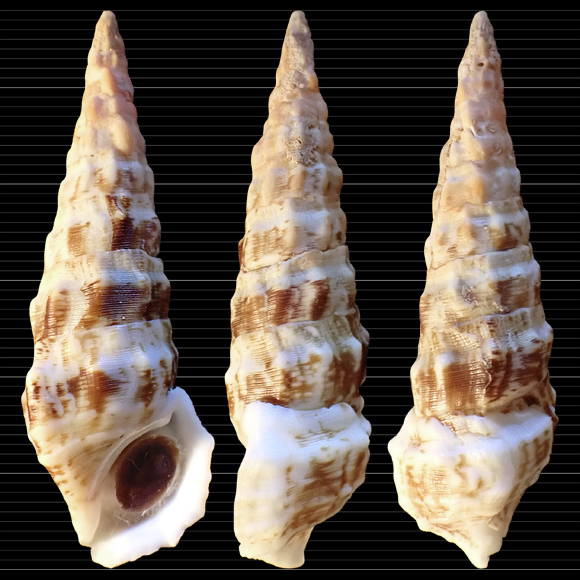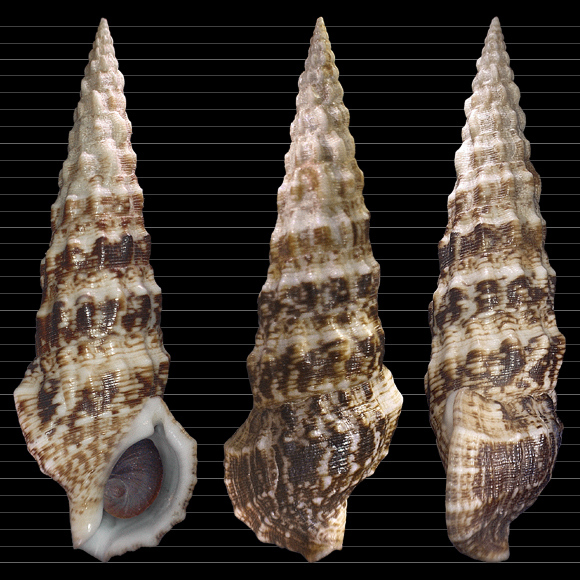
On muddy sands with a part of detritic, mostly at 25-50m deep, sometimes deeper, or, but this is rare, in very shallow water, like in the laguna di Venezia (Russo & Quaggiotto, 2016).
Grazer and detritus feeder.Protonym: Murex alucaster.
15m deep, Punta di Benedettu, northern shore of the Gulf of Porto-Vecchio, SE. Corsica. 65mm.
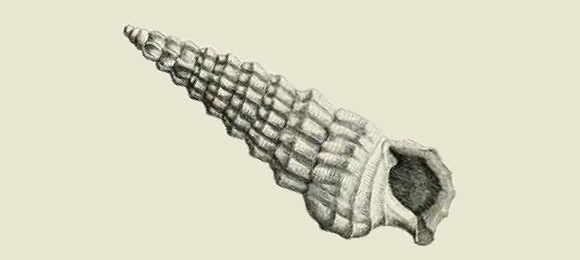
Conchiologia fossile subapennina… plate X fig.4.
« Shell pyramidal, finely striated transversely; whorls longitudinally ribbed, depressed adapically, with a subcoronate keel; last whorl surrounded by necklace-like cords. » – op. cit. p. 438-440. Protoconch multispiral, most often eroded.
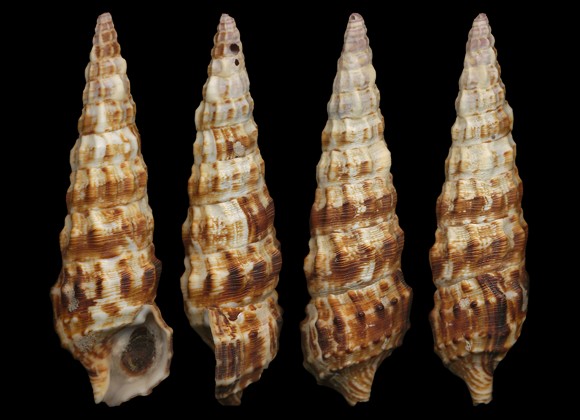
Synonyms: directum, femoratum, subnodosum, tortuosum… The species, at adult stage, is characterized by its large size and by its sculpture, which is made of axial folds crossed by spirals of very weak knobs, except on the last whorl where two or more closely spaced rows of knobs can often be seen just above the beginning of the siphonal canal; a similar row is visible on this whorl, at the shoulder. This is Brocchi’s last whorl, girded by « striis moniliformibus » – see also below.
25m deep, on mud, Chioggia, Venezia, NE. Italy. 74mm.
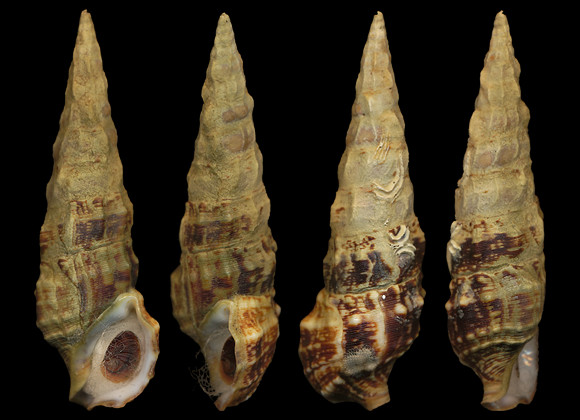
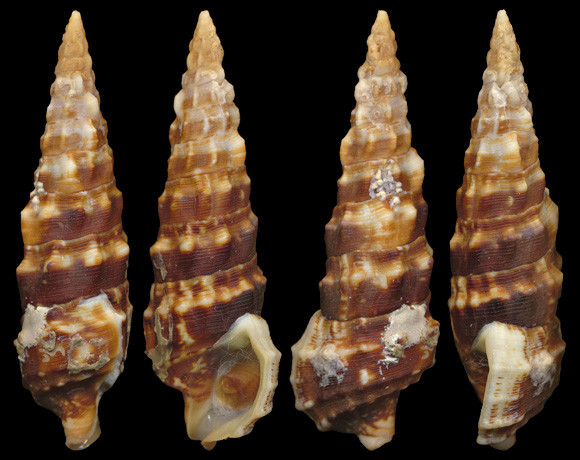
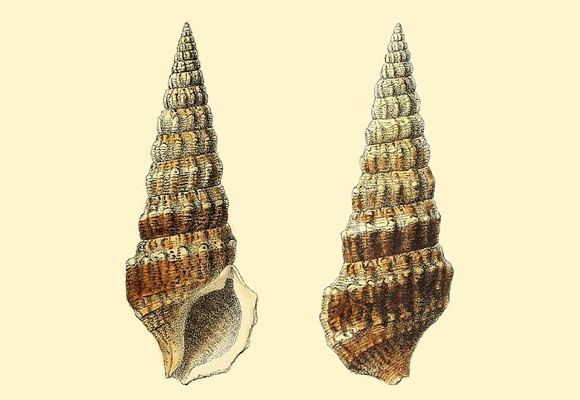
Cerithium subnodosum in W. Kobelt: “Die Gattung Cerithium”, Syst. Conchylien-Cabinet Bd.1:Abt.26, Nürnberg 1898, pl.XV. The suprasutural band, the longitudinal folds, the spiral rows of knobs of the last whorl are well represented. Notice the spiral thread, which run along the « exquisite transversim striata » teleoconch; they are not always that marked, but allow to differenciate this species from Cerithium vulgatum: the cords are flat, separated by thin incisions and of equal height in alucastrum, while they are slightly convex in vulgatum, and of different sizes.
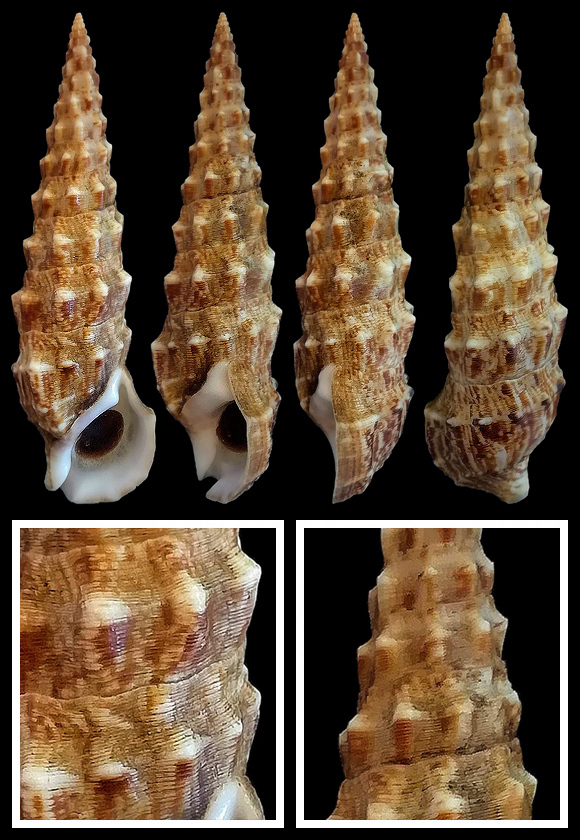
– (CC BY-NC-SA) –
